SUNDAY 3 JULY
A tree for a life
With another hot day ahead, we left Schengen early on Sunday
morning where we were only a couple of hundred metres from the lock that marked the French border. It felt far
more comfortable speaking on the radio in French rather than German and therefore understanding
the éclusier’s response telling us we had to wait for a bateau de commerce and then follow it in. We hung
around away from the lock entrance to let it pass when it arrived and were
surprised to see that it was a boat carrying fuel as we thought they had to use
locks on their own. For some reason, which we couldn’t quite work out, it had great difficulty getting into the lock but
finally made it then we went in and tied up behind him.
.jpeg) |
| Sharing the lock at Schengen |
The lock marked the end of our enjoyable time in Luxembourg, and we
would now be back in France for the rest of the year. The next stage of our travels will take us up
the Moselle for around 130 km towards Nancy where we will find somewhere to
leave the boat while we return to the UK for a couple of family holidays in
August.
 |
| Next part of our journey heading south |
We didn’t have to go far before we reached our destination for the day, Sierck-les-Bains. As we rounded a long bend it came into view nestling under a rather imposing castle.
The mooring we were looking for was a couple of 20 metre lengths
of metal staging at the far end of the town.
Before we reached the staging we spotted a short wall which looked a lot
more inviting even though it wasn’t a recognised mooring spot. There was a makeshift ring and a couple of
bollards so we temporarily moored up while Karen walked down to check out the
staging, She found that it didn’t seem
to have access to the bank as it was behind a locked gate so we stayed where we
were and made ourselves extra secure as it was a section of river where water
skiing is allowed. Wake from
commercials hardly ever bothers us, but that from speedboats can really make
the boat roll especially as we are long and narrow.
 |
| Our mooring at Sierck-les-Bains |
During the afternoon we had a look around the town which had a mixture of narrow streets with small houses and a couple of wider streets where the dwellings would have originally been for the more prosperous. We found the place a bit sad and run down as evidenced by the fact that in 1960 there were 27 bistros and today less than a handful.
 |
| Venelle Saint-Christophe |
 |
| Rue du Moulin |
The town used to be fortified around the hill upon which the castle sits. Today there are just two towers left:
 |
| Horloge tower built in 1294 |
 |
| St Nicholas tower also built in the 13th century |
We spent the rest of the day back at the boat keeping cool and listening to the final test against India. During the evening the castle was lit for a couple of hours providing us with quite a dramatic backdrop that didn’t quite translate to pictures.
On Sunday we cruised four km up one lock.
MONDAY 4 JULY
Boats continue to pass throughout the night on the Moselle but
with no particular regularity or pattern that we can fathom; there was even one
night last week when we heard none pass at all.
Unfortunately, the throb of the approaching engines seems to bother
Buddy, waking him up and making him stand until they are past. As we progress further upstream back through
Metz and Nancy the traffic should decrease so he’ll soon be returning to unbroken
sleep.
With over 20 km to travel to reach Thionville we set off during
the morning. Apart from one short
stretch of vineyards the views seemed to have completely changed since we’ve
returned to France. The hills are
further away and are covered in woodland, and the steep valley sides have been
replaced by a flood plain which, as you would expect, is mainly arable land.
Radioing the one and only lock of the journey we received the
welcome response, ‘l’écluse est prêt’ and when it came into view the lights
were indeed on green, so we were quickly through. From what we could remember this was the
first river lock on either the Saar or the Moselle that we have been able to
sail straight into.
By early afternoon we were on the outskirts of Thionville looking
for a 20-metre pontoon. When we
approached it, Karen could see through the binoculars that it was already
occupied by a Swiss river cruiser, so we resigned ourselves to finding the next
mooring which was at the other end of town.
When we reached the pontoon, we could see there were a few 10-metre
finger pontoons hidden behind the cruiser.
These weren’t in our mooring notes, so we were surprised to see
them. Even though they weren’t ’really
long enough for us we managed to moor up to one and were pleased to see we
would be in the shade of the riverside trees within an hour or two.
 |
| Tied up in Thionville |
The mooring was right next to the old town, so we had a quick wander around leaving a more thorough one until the next morning. It was quite a shock once we’d walked up to the street level as we were suddenly hit by the noise of a busy street, but I suppose we were in the middle of a large town.
The hôtel de ville was built in the 17th century as a
convent but has been used as the town hall for 125 years.
 |
| Hôtel de ville |
In our short walk we came across three different memorials each marking one of the times the town was liberated and handed back to the French. The one by the bridge (pont des allies) marked the 60th anniversary of the Germans fleeing the town.
 |
| 60 years after liberation |
Another one, which was by our mooring, marked the 70th anniversary of the same event.
 |
| 70 years after liberation |
A castle was built in the 11th century by the counts of Luxembourg with a fourteen-sided tower as the keep. It is the only part of the original construction that is still standing and I’ve no idea why it is called the tower of fleas.
 |
| Tour aux Puces |
When we returned to the boat it was in the shade as expected
giving us a more comfortable evening doing the opposite of gongoozling by
watching the evening promenaders on one side and the local lads showing off on
their jet skis on the other.
On Monday we cruised 22 km up one lock.
TUESDAY 5 JULY
During the morning we went around the parts of Thionville old town
that we didn’t see on Monday. It is said that 36,000 monuments marking the
French Revolution were installed across France and it’s hard to believe but
apparently the one in Thionville is the only one not destroyed on the orders of Napoleon.
 |
| Monument to the Revolution in Place Claude Arnout |
Many of the shopping streets had decorations strung along above the shoppers and tourists:
Most of the squares were occupied by outdoor seating for the restaurants
and bars. Place Anne Grommerch was the
largest and also the oldest and held the town markets for several centuries.
 |
| Place Anne Grommerch |
A building on the corner of Place au Bois started life as a tobacconist as indicated by this statue which is of a man sitting on a bundle of tobacco. Originally he was holding a pipe in his right hand.
 |
| On Place au Bois |
Another building used to be a German brewery as shown by a statue of a monk on the corner.
 |
| Monk holding a mug of beer |
St Maximin church which dates from the 1750s was unusual as it wasn’t built with a steeple; it had two lookout towers instead.
 |
| St Maximin church |
Rue de la Tour had some 16th century houses from the period of the Spanish occupation as evidenced by the exterior turret style staircases on several of the buildings.
 |
| Three of the turret style staircases |
The belfry that can be seen in the background of the picture above dates from the 14th century and is of a style more common in Belgium and northern France.
.jpeg) |
| The belfry |
We finished our tour of Thionville and returned to the boat just in time to listen to the thrilling end to the test match against India. We’ve been fortunate to have been able to listen to every minute of England’s last four tests even if a couple of times we’ve had to share earbuds when sightseeing. One thing we hadn’t seen on our tour were the old fortifications, but we did pass one stretch as we left our mooring after lunch:
We went up the lock in the middle of the town and immediately
turned off into an old commercial port now used as private moorings for little
river cruisers and speedboats on one side, and on the other a boatyard converting old péniches into
liveaboards and an old quayside for visitors such as us.
 |
| Moored at the other end of Thionville |
The reason for such a short cruise was to find a supposed water point. We found one but it was for large boats with bowser type fittings. There was another on the lock side but with a constant stream of boats in each direction all day it would have been an awfully long wait before we'd been allowed to use it, if at all.
On Tuesday we cruised two km up one lock.
WEDNESDAY 6 JULY
Our target for Wednesday was to get to an old commercial port at
Talange at the end of a disused embranchment off the river. Karen’s Google earth exploring had made her
confident that we would find somewhere peaceful to moor along there. As well as being off the beaten track for
private boaters it would also mean we would be away from the effects of passing
night-time traffic.
Approaching a place called Uckange we could see the unmistakeable
sight of a blast furnace ahead. We only
recognised it because of our tour around the old steelworks and museum at
Völklingen when we were cruising through Germany. Apparently, this area of the French Moselle
used to have many steelworks, but they have long since been dismantled except
from this furnace at Uckange which is now also a museum.
 |
| Uckange blast furnace |
We’ve noticed that several boats each day have been carrying coal and shortly after Uckange we passed a coal port where a boat was being unloaded. A lot of activity was happening around the place with bulldozer like machines moving coal and creating a haze of dust across the river.

We turned onto the old embranchement just before the lock at
Talange and were pleasantly surprised as it was weed free, and the banks were
clearly still well looked after.
 |
| Embranchement d’Hagondange |
We decided to go all the way along to the end so we could find the best spot to moor for the night.
Near the end we rounded a corner and were faced with the sight of a big
dipper and realised we were alongside a fun park. When we’ve driven in this area in France in
the past, we’ve seen signs to Walygator and always thought it was a strange
name. Looking on the map we found that the
fun park was called Walygator, so the mystery was solved.
 |
| One of the rides |
At one point along the waterway a lot of works were going on and
an old commercial quay was being converted into a marina. It looked like it would be very pleasant once
it was completed.
.jpeg) |
| New marina |
After turning around we made our way back along and moored to a
couple of trees that also supplied plenty of shade. We soon realised that boats are a rare sight
along the embranchment as we quickly became the focal point for the
locals. As narrowboats are a rare sight,
we’re used to the attention, but this was on a different scale as it felt like
every passer-by was taking a keen interest.
After mooring up we had a quick look around the area and were both
moved by a sign explaining about an unusual approach to tree planting along the
section we were tied up in. During 1998,
93 trees were planted, each one representing one of the 93 children born in
Talange during 1997. The sign also
included the name and birth date of each child, no doubt contrary to some part
of a data protection act somewhere in the world.

While having lunch I received the sad news that my father had just
died peacefully. Thankfully it was quick
and although he’d been physically incapacitated for some years, he was still
mentally alert and able to complete The Times crossword each day.
This did mean of course that we had to get into full planning
mode to get to the UK as quickly as possible. We were already coming back to the
UK for five or six weeks from the end of July and had planned to leave the boat
once we were off the river and onto a canal.
We’d felt it would be safe at a place called Void outside a VNF office,
especially if we told them we were leaving it there as we had a family
emergency, which ironically now turned out to be true.
Clearly, we needed to find somewhere closer to leave the boat and
after ringing around found that the port at Metz had a space for us and we
could get there in one day. We also had
to change our tunnel ticket and get an appointment with a vet who could do the
post-Brexit checks that have to be done for dogs now. Fortunately, we found a vet a couple of
kilometres away who could accommodate us first thing in the morning.
Another thing to do was to retrieve the car from the port at Condé-sur-Marne
which was 200 km away. Fortunately, I
could get a train from Metz to Châlons-en-Champagne which was only 20 km from Condé. I rang the capitaine at the
port at Châlons to see if she could take me in her car so I could avoid the
hassle of getting a taxi and she was more than willing to help so I booked a
train ticket for Friday afternoon.
We also had to rearrange our second covid boosters which we’d
booked for a couple of weeks’ time in Nancy; we were in luck and were able to
change them to a pharmacy in Metz on Saturday.
On the assumption we would need a day to pack the car we changed the
tunnel ticket to Sunday meaning we only had three more nights left in France
before returning to the UK.
 |
| Moored on embranchement d'Hagondange |
On Wednesday we cruised 14 km up one lock.
THURSDAY 7 JULY
We walked to the vets first thing in the morning and went through
the rigmarole of getting Buddy to take a tablet and having his French passport
stamped as proof of his treatment. Dogs have to have a tapeworm tablet between
24 and 120 hours of travelling and it’s daft as we treat him once a month
anyway and he’d only had a tablet a couple of days ago, but rules are
rules. Back on board we headed off for
Metz under grey skies.
 |
| Grey arriving in Metz |
As well as the Moselle and a couple of smaller rivers Metz has
several canals to serve commercial ports, some of which are no longer used. As we came out of Metz lock, we entered one
of the canalised sections which was relatively narrow compared with the river. We immediately had to wait for a 160m
commercial who was passing the brilliantly named 125m Gotcha that was in the
process of being unloaded.

Shortly afterwards we turned off onto a branch that led down to
the pleasure port on a small lake in the middle of Metz. It was in a great location, just a short walk
away from the cathedral and many of the other great buildings in the city. After settling in we had a quick walk to the
tourist office to pick up some trails to help us explore the city when we
returned at the end of August. What we saw
of the place greatly impressed us especially the wonderful colour of stone used
for the buildings; it certainly gave us something to look forward to on our
return.
On Thursday we cruised 16 km up two locks
FRIDAY 8 JULY
My train journey to Châlons-en-Champagne was uneventful and as I
had an hour to kill before Blanche finished work and would be able to take me
to Condé-sur-Marne, I had a walk around the familiar surroundings of the
parks. As it was summer, the plage next
to the port was open and full of families enjoying themselves in various
activities from pedalos and volleyball through to sunbathing and partaking of
the delights of the champagne bar.
When we arrived at the port in Condé my key fob wouldn’t unlock
the car and I soon realised the battery was completely flat. As we carry jump leads in the boot my
immediate thought was to break a window to get them and use Blanche’s car to
provide the power. I rang Karen to explain
the situation and she suggested I ring our son Steve who explained how to
retrieve a physical key from inside the fob which meant I could get in the car. We have an estate car, and the battery was in
the boot but as only the driver’s door could be opened with the physical key, I
had to do a lot of clambering to get through to the boot. The task was exacerbated by the many things
we store in the car, and it was very hot due to the 30+ degree heat not helped
by the fact the windows and remaining doors couldn’t be opened.
The next problem was that we couldn’t find how to release the
bonnet on Blanche’s car. We asked François
who was working one of the boats if he knew how to do it, but he was as stumped
as we were. Luckily the only commercial
enterprise in the village other than champagne houses was a small garage so we
sheepishly asked there how to open the bonnet.
It was so obvious that we couldn’t believe three of us could have missed
it. I connected up the jump leads but the
battery was too dead to take any charge.
By this time the battery outlets like Norauto (the equivalent of Halfords)
were all closed so my thought was that I would go back to Metz and return in
the morning. I found there was one train
left and it would get me in for midnight at which point Blanche said I should
stay over at her parents’ house in Châlons, and she would take me to Norauto to
get a new battery in the morning. It was
an incredibly kind gesture and, even though she hadn’t checked with her
parents, she wouldn’t let me refuse.
Considering the circumstances, I had an enjoyable evening with the
family who had a wonderful old house. Blanche
and her sister were also there for the evening, and I was treated to champagne
from their favourite producer and a wonderful meal. I have to say that I found it quite stressful
at times with the language but fortunately her mother loves the UK, so she wanted
to speak in English. In the morning Blanche’s
father took me to Norauto where I was given a couple of batteries that would do
the job – there was a choice because I didn’t know the horsepower of our car
and sod’s law was that it was the more expensive one that fitted.
The car started immediately and after taking the other battery
back to Norauto and handing in the defunct one I was soon on my way back to Metz.
SATURDAY 9 JULY
 |
| Our view across the lake at Metz |
Other than getting our jabs (France now does second covid boosters
for 60+ year olds) it was packing the car day.
While I was watering the plants in the evening, our Swiss neighbours on the
boat next to us offered to water our plants while we were away which was
wonderful news. They were staying in Metz
until the end of August as they’d been advised to take things easy for a couple
of months due to some medical condition the wife had been diagnosed with.
By late evening we were ready for leaving at six in the morning for
our trip back to the UK. As we won’t be
cruising again for a while, I probably won’t be writing any blog updates until
the end of August. In a way we were
thankful we were going back early as, even though a heatwave is on its way in
the UK, it probably won’t be as bad as the 40+ degrees being forecasted for France.


.jpg)


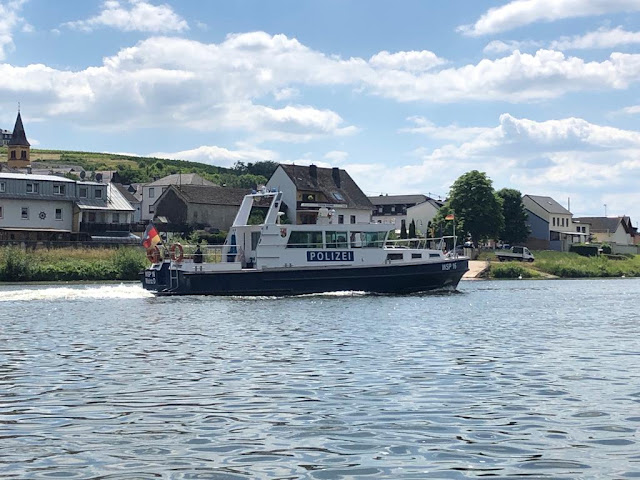



.jpeg)
.jpeg)





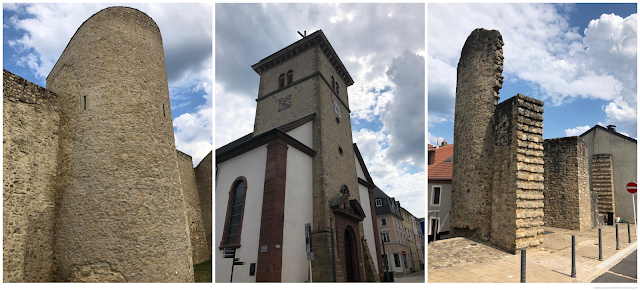








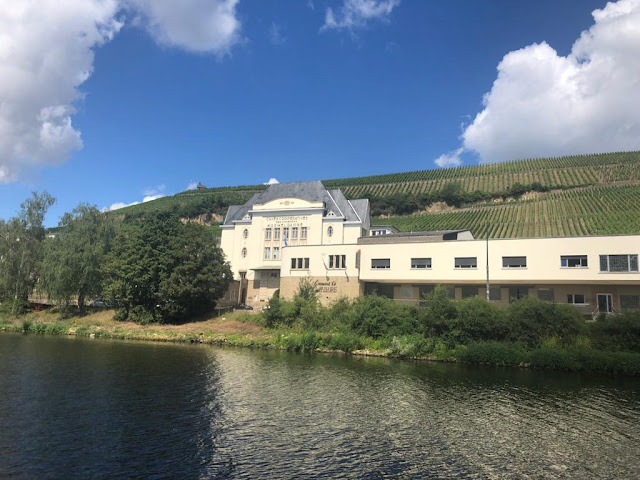


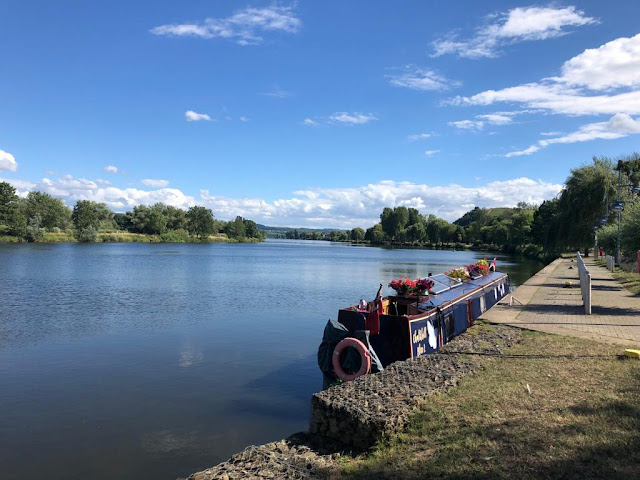


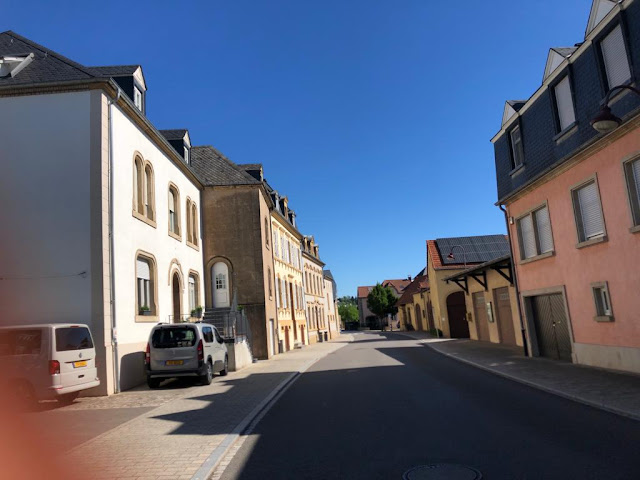
.jpeg)


.jpeg)








